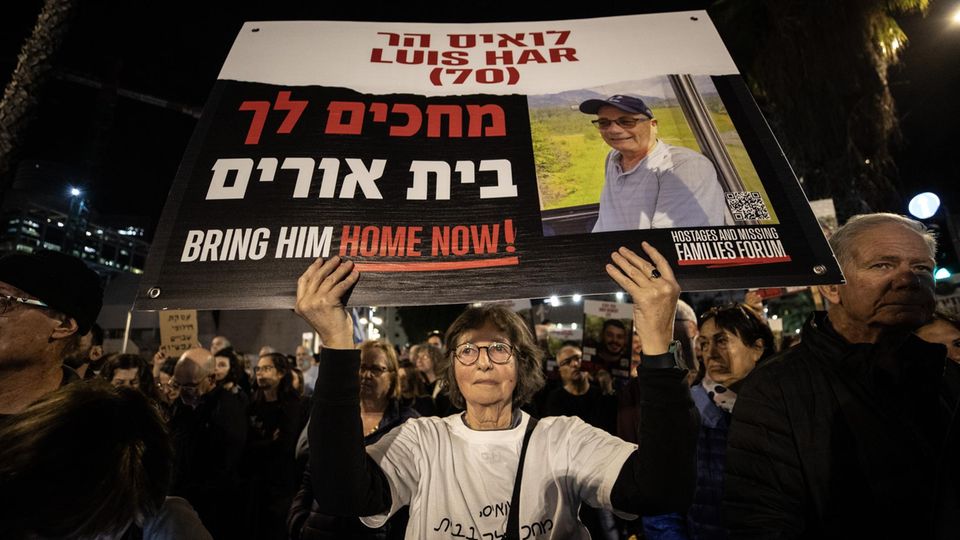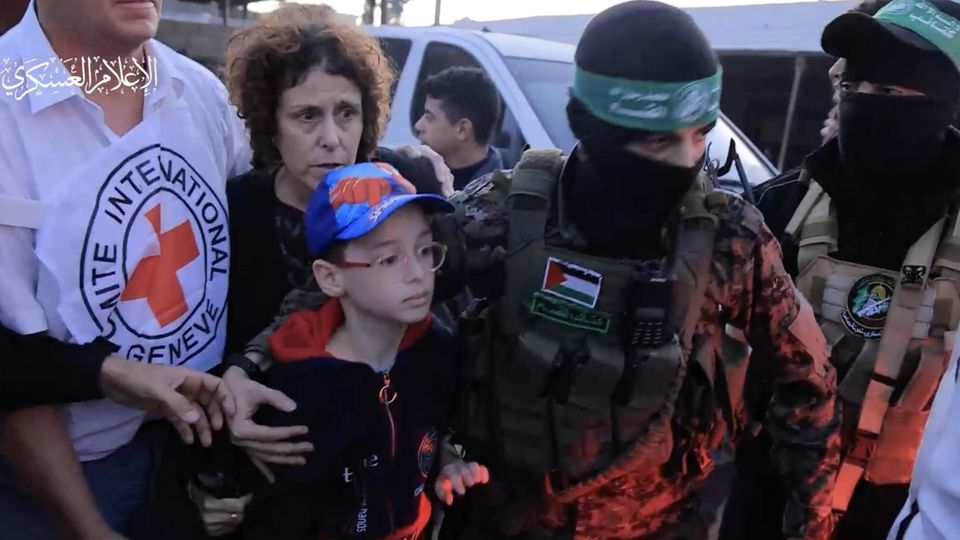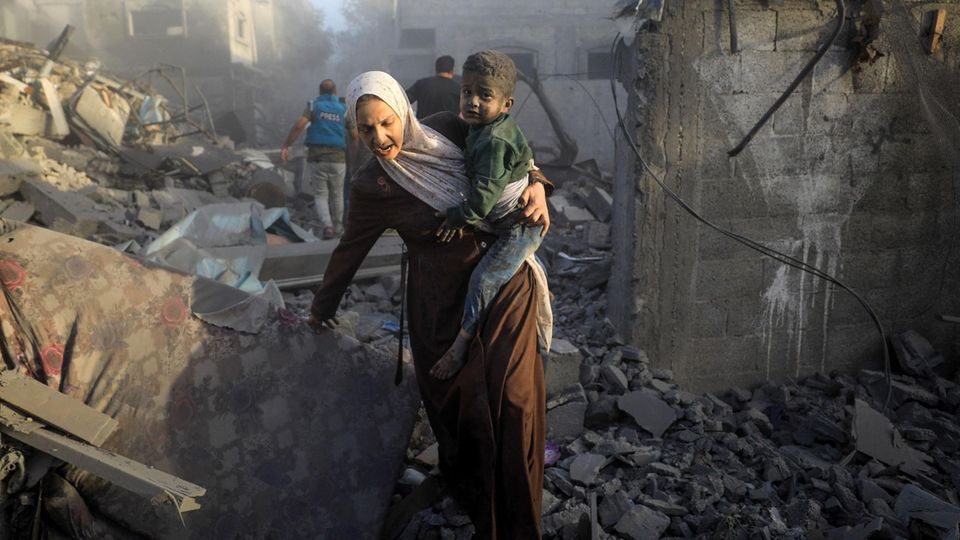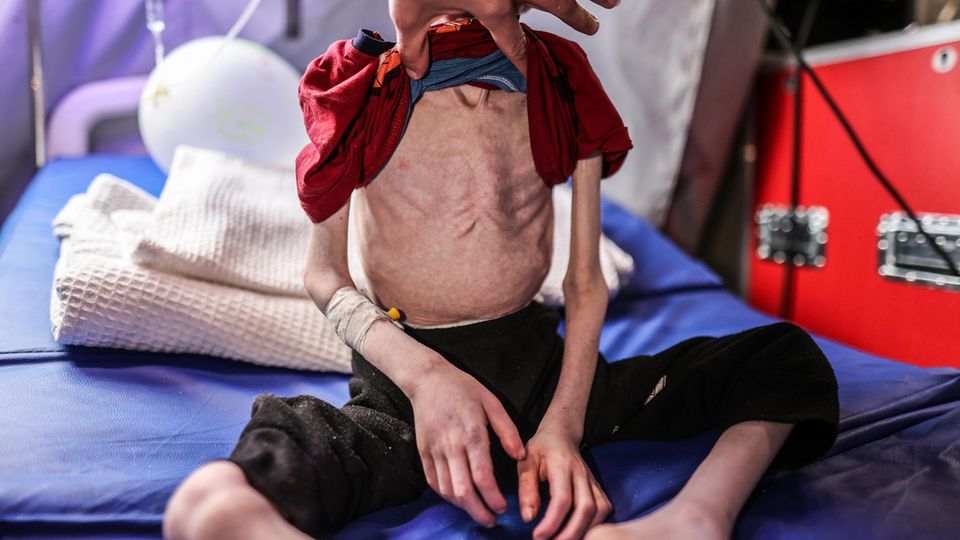As memories of the Hamas massacre fade, the view of Gaza has changed. Because the war in the Middle East is also a war of cameras. Israel is currently losing it. Six terrible months in six pictures.
Exactly half a year has passed since zero hour in the Middle East. Since Hamas and Islamic Jihad terrorist squads tore down Gaza’s border barricades with Israel in order to murder, rape and kidnap there. Since Israel’s Prime Minister Benjamin Netanyahu issued a military response with unrelenting severity, no matter the cost. Since October 7th, Israel has become a land of anger and fear, Gaza has become a strip of destruction and suffering. But this war is not only fought with rockets and tanks, behind human shields and in tunnels full of hostages. This is also a war of camera lenses.
Photos tell stories. And especially in a conflict in which good and evil cannot be easily separated, in which both Israelis and Palestinians have legitimate interests, what counts is who gets away with their story. Using six pictures, he shows starhow the narrative in the Middle East war has changed in the last six months.
October 7th Traces of horror: Smeared blood and bullet holes in a children’s room in Kibbutz Be’eri. Hamas massacred more than 100 people here on October 7th © Yoray Liberman / star
For many Israelis, the deadliest day in their country’s history began with a familiar sound: the air alarm. But this early Saturday morning sent Hamas doesn’t just use rockets and mortar shells. She overran Israeli army (IDF) outposts. She took the police station in the city of Sderot. She massacred 1,139 people in the kibbutzim near the border and took around 250 hostages.
Images from the streets of Gaza City show celebrated terrorists loading the abducted people onto their pick-up trucks like hunting trophies. At this moment it is clear: Israel was attacked by barbarians. It has the right to defend itself.
The fighting quickly moved to Gaza, initially with large-scale attacks by the IDF air force. But emaciated Hamas henchmen were still being tracked down on Israeli soil, and Israel’s military was already offering the first tours of the destroyed kibbutzim. star-Photographer Yoray Liberman took the above photo in a blood-smeared children’s room in Be’eri. More than 100 people were killed here alone on October 7th. With the press tours, Netanyahu wanted to preserve the horror and use the images to maintain his legitimacy for the war. Things didn’t go well for long.
Protests in Tel Aviv Netanyahu’s war policy is itself coming under fire. Almost every day, the hostage relatives in Tel Aviv demonstrate for the release of their loved ones © Mostafa Alkharouf/Getty Images
Netanyahu had already been chronically unpopular in the summer of 2023 because of a controversial constitutional reform. His hope that the Israelis would unite behind him after this unprecedented attack on their country disappeared in the fog of war. Many citizens resented him for being the primary target of the military operation in Gaza repeatedly calls the final destruction of Hamas. And not the liberation of the kidnapped compatriots.
“Bring her home! Now!”, it echoed almost daily through Tel Aviv’s streets from then on, especially across a large square in front of the art museum. The demonstrators christened it: Geiselplatz. Soon there were tens of thousands. From their perspective, Netayahu not only neglected the fate of the hostages – he made the bloody attack possible in the first place through ignorant security policy. “Our government doesn’t act. That’s why I’m here almost every day. Freeing the hostages militarily is not an option. It’s too risky. Then they come back dead,” Ofir Weinberg told the stern one evening on Geiselplatz. At that point she didn’t know that she would never see her cousin Itai again. Hamas will murder him in captivity.
The hostage deal Feigned kindness: A terrorist puts his arm around the shoulder of a young Israeli hostage as she is being released. Hamas distributed a video of this on its propaganda channels © Al-Qassam Brigades/Getty Images
At the end of November, pictures of hope: 69 hostages can leave Gaza again, including 50 Israelis. Both warring parties reached an agreement at the negotiating table in Doha, Qatar: the hostages would be released in exchange for 150 Palestinian prisoners, mostly women and young people. There is a seven-day ceasefire.
Hamas distributed video footage of the release on its propaganda channels. In it, a terrorist puts his arm over a little boy’s shoulder. An old lady waves goodbye to her tormentors. The mock message: Look, we treated her well! Former hostages later spoke of humiliation, violence and hunger. And the hope that a ceasefire could lead to a ceasefire quickly dissipated. The IDF resumed fighting at the beginning of December. Netanyahu had meanwhile sent ground troops to Gaza. They slowly fought their way along the strip to the south.
Dying in Gaza Nobody is safe: mother and child reach safety in the al-Mahazi refugee camp after an Israeli air strike © Yasser Qudih / AFP
Terrorists hiding in the depths of densely populated Gaza. An army foaming at the mouth. The Palestinian civilian population must pay the price. Over 30,000 people are said to have died in Gaza since October 7th, two thirds of them women and children.
A guerrilla fight is never without civilian casualties. But there is one thing that makes the situation in Gaza so catastrophically unique: the people are cordoned off and the borders to Israel and Egypt are closed. They have nowhere to go. Families are being driven out more and more and have to leave zones that are actually marked as safe. Refugee groups are forming on the two major roads heading south. 1.5 million people, the majority of the population, are now seeking refuge in the southernmost city of Rafah. As the war continues, the suffering in Gaza becomes the focus of global attention.
The Hamas tunnels On a dangerous mission: Israeli soldiers from the Jerusalem Brigade have discovered a Hamas tunnel shaft. They blow up the entrance © Ziv Koren / star
The Israelis are aware of the devastating collateral damage of their military operations. They want to send other images to the world: of weapons depots in schools, of a tunnel system under the Al-Shifa Hospital, of an enemy that can be anywhere and nowhere and has taken over the civilian infrastructure.
The IDF therefore has reporters accompany it through controlled areas in Gaza, known in technical jargon as the embedment. For journalists, such an effort is a moral quandary. The US broadcaster CNN made it public that it had to submit all material to the Israeli army again before publication.
The humanitarian catastrophe Little more than skin and bones: rescue workers evacuated nine-year-old Fadi to a field hospital in Rafah. He comes from northern Gaza, where the supply situation is particularly serious © Ali Jadallah/Getty Images
In the space of six months, Israel has gone from a state that the Western world supported unconditionally to a partner whose actions can hardly be justified. On the one hand, this is due to Netanyahu’s tough war course, which is feeling increasing pressure, not only from his own country, but above all from the USA. And on the other hand, the power of the images.
What the eyes of the world now see are starving children, hospitals that are beyond their limits, an NGO convoy attacked by Israel, and aid deliveries that lead to mass panic. The humanitarian catastrophe in Gaza. There is no current evidence of the approximately 130 Israeli hostages still in the clutches of Hamas. There were plenty of photos of demonstrators and tunnels. The terrible recordings of October 7th – they have faded.




